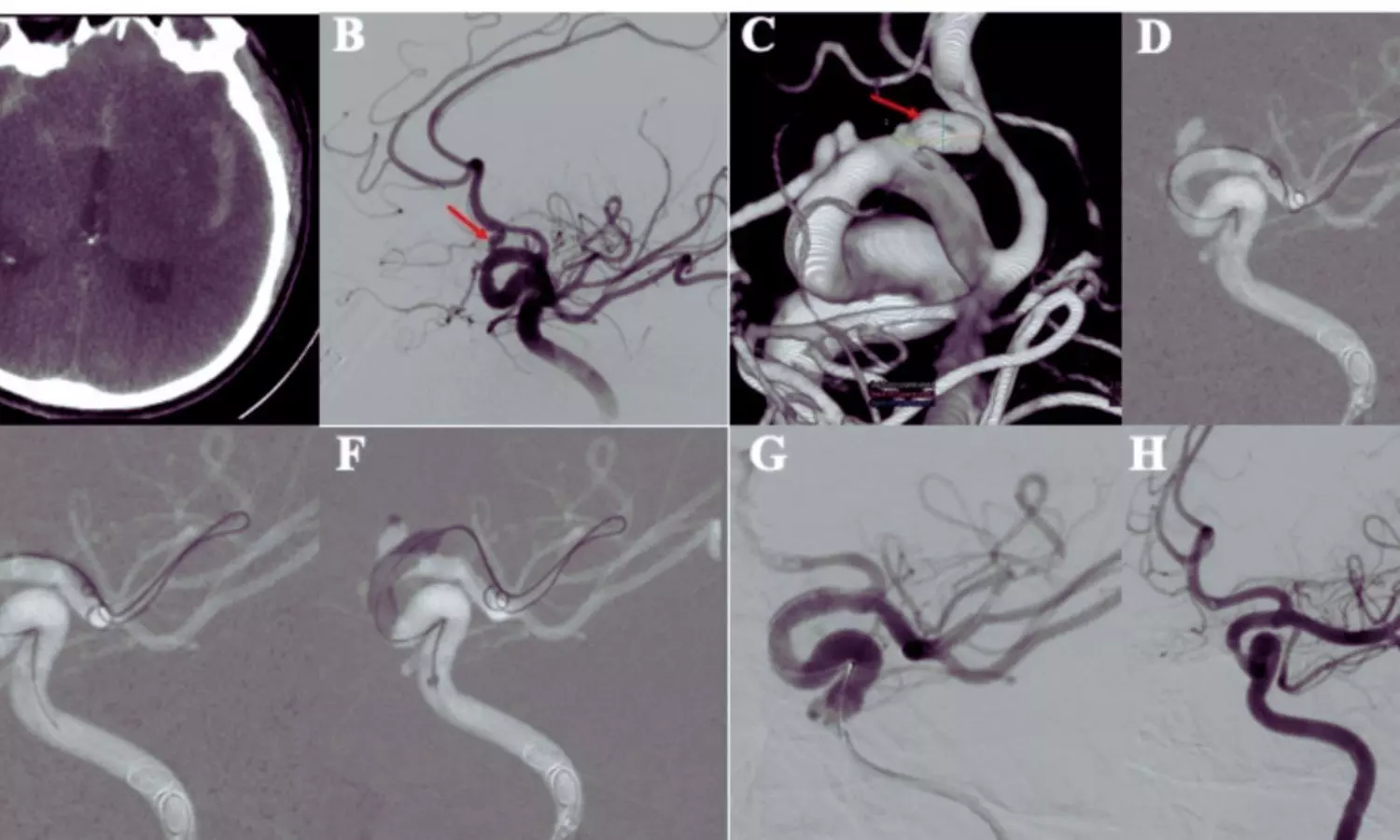Willis Covered Stent Promising in Treating Intracranial Blood Blister-Like Aneurysms: Case Series Findings

China: A recent case series published in BMC Surgery has highlighted the potential of the Willis covered stent (WCS) as a viable option for managing intracranial blood blister-like aneurysms (BBAs), a rare but challenging subset of aneurysms associated with high rates of rupture and mortality.
Sheng Guan, Department of Neurointervention, Zhengzhou University First Affiliated Hospital, Henan, Zhengzhou, China, and colleagues reviewed the medical records of 21 consecutive patients who underwent endovascular treatment with the WCS between July 2017 and July 2022. BBAs are typically located at non-branching sites of the internal carotid artery and are structurally fragile due to the absence of key arterial layers, making treatment particularly complex.
This series involved 15 female and six male patients with an average age of 51.6 years. The immediate postoperative results were encouraging—angiographic evaluations confirmed complete occlusion of all aneurysms without endoleak. While the parent artery remained patent in all cases, the procedure was not without complications. Occlusion of the ophthalmic artery was noted in five patients, accounting for 23.8% of the cases. Additionally, one patient developed delayed thrombosis of the stent three days post-surgery.
During an average angiographic follow-up period of just over nine months, all aneurysms remained completely sealed. There were no cases of aneurysm rupture, recurrence, or need for retreatment. Mild to moderate asymptomatic in-stent stenosis was detected in two individuals. Clinical follow-up, which spanned an average of 20 months, revealed excellent functional outcomes—20 patients scored a zero on the modified Rankin Scale (mRS), indicating no disability, while one scored a one.
The Willis-covered stent, designed initially for use in complex intracranial pathologies such as pseudoaneurysms and carotid-cavernous fistulas, offers a promising treatment avenue for BBAs. Its structure—a combination of a balloon-expandable stent and a polytetrafluoroethylene membrane—enables it to seal the aneurysm while maintaining vessel integrity.
Despite the encouraging outcomes, the researchers emphasized that the procedure is not without risks, particularly for technical challenges related to stent delivery and potential complications like branch artery occlusion or in-stent stenosis. Given the small sample size and limited follow-up duration, they called for larger prospective studies with longer observation periods to validate these findings and refine treatment protocols.
“The findings from the case series add to the growing body of evidence supporting the Willis covered stent as a safe, feasible, and effective option for the endovascular management of blood blister-like aneurysms,” the authors noted.
However, they cautioned that its use warrants careful attention to potential procedural challenges, including stent delivery difficulties and related complications, to ensure the best possible clinical outcomes.
Reference:
Jin, Y., Guo, X., Chen, Z. et al. Endovascular treatment of intracranial blood blister-like aneurysms with the Willis covered stent: a case series. BMC Surg 25, 140 (2025). https://doi.org/10.1186/s12893-025-02874-0
